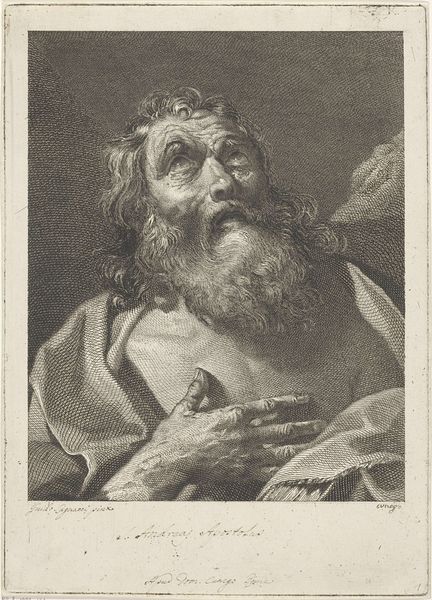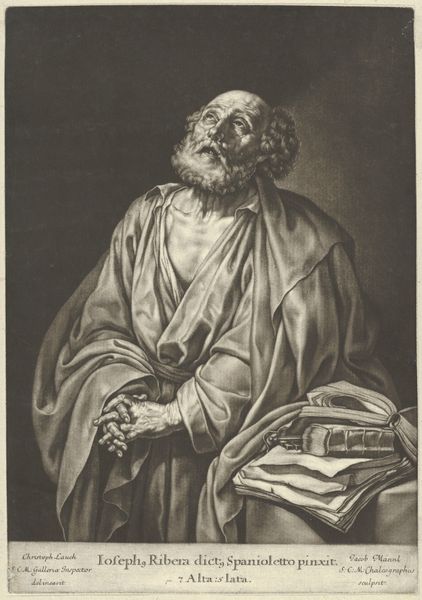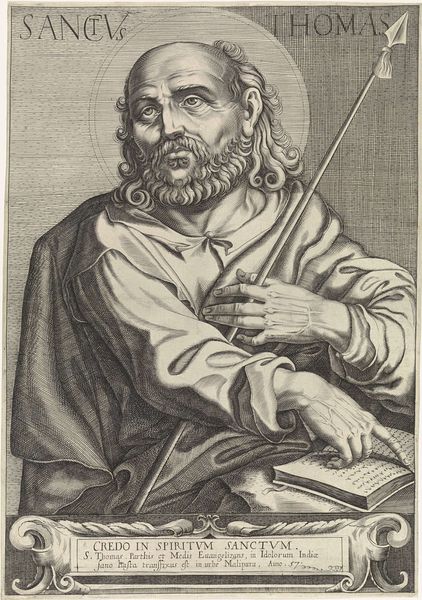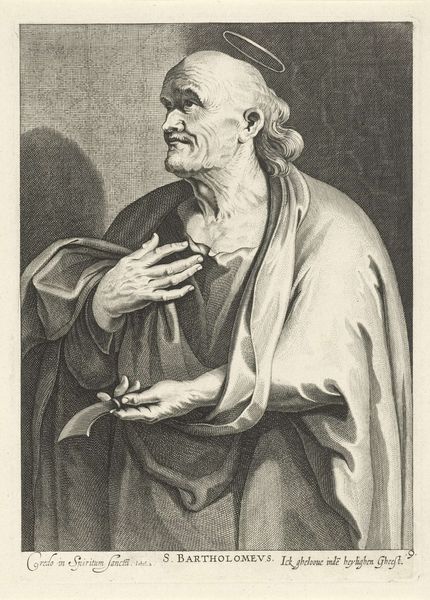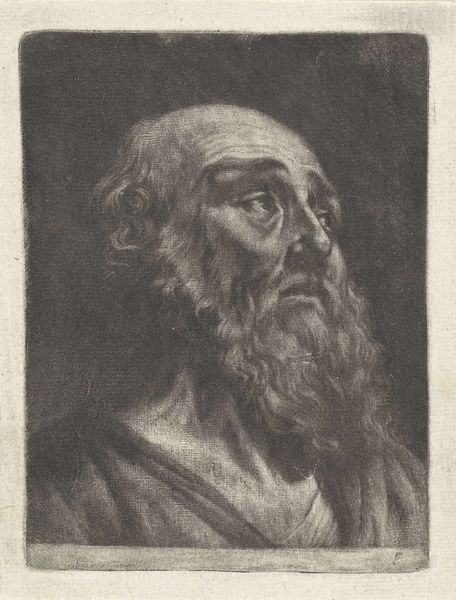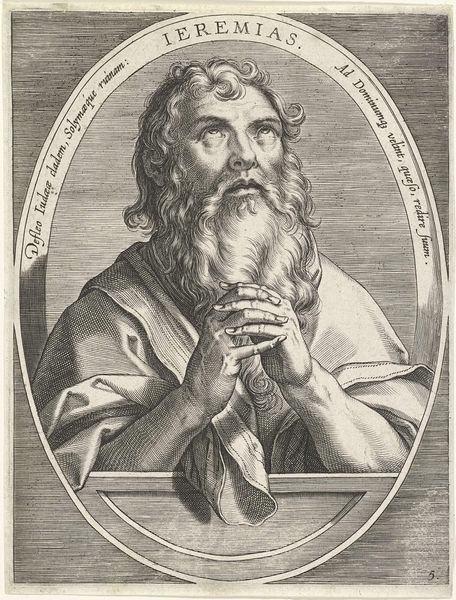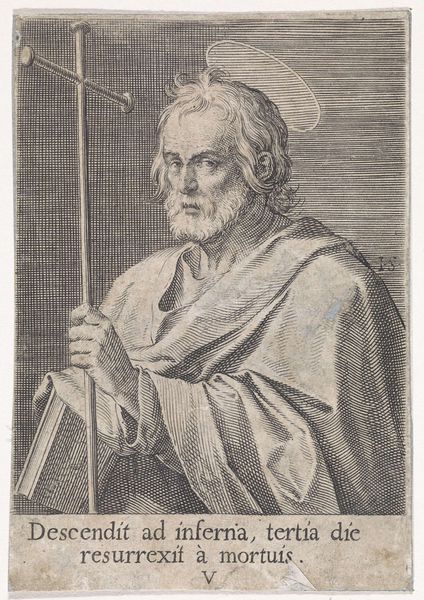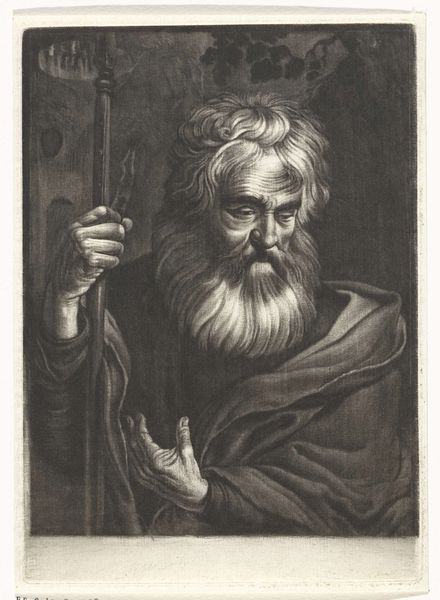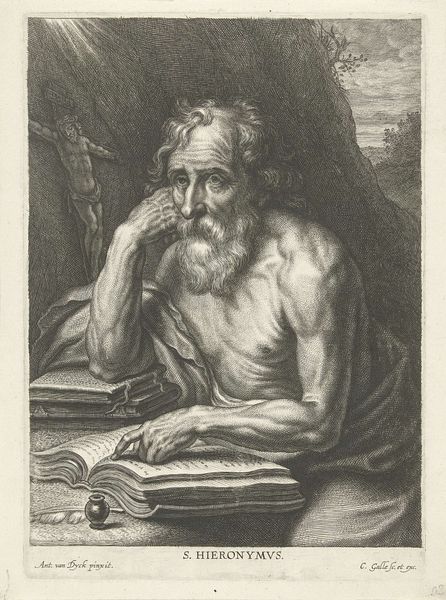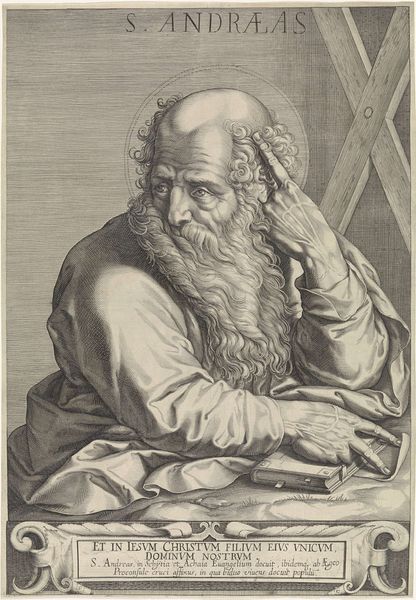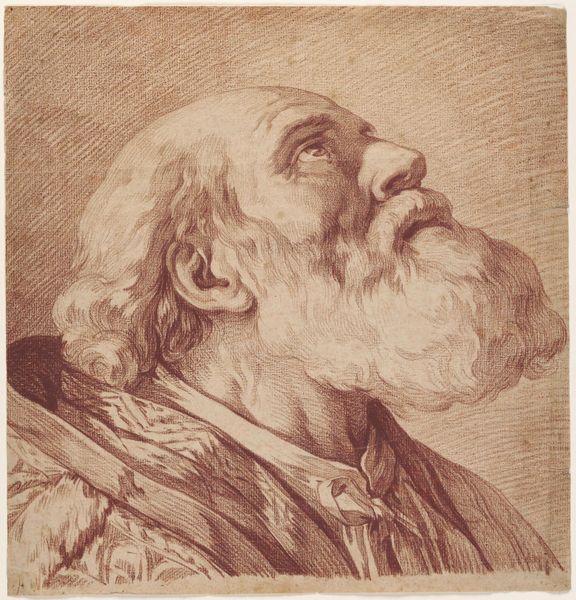
drawing, paper, ink, charcoal, engraving
#
portrait
#
drawing
#
baroque
#
charcoal drawing
#
paper
#
ink
#
portrait drawing
#
charcoal
#
engraving
#
portrait art
Dimensions: height 249 mm, width 183 mm
Copyright: Rijks Museum: Open Domain
Curator: Here at the Rijksmuseum, we have an engraving entitled "Boetvaardige Petrus," which translates to "Repentant Peter." The piece, which dates from 1658 to 1727, is unsigned. What are your initial impressions? Editor: Somber. But there’s also something ethereal, like he's half in shadow and half bathed in divine light. His hands are clasped in what appears to be fervent prayer; he gazes upward in supplication. There’s a deep sense of introspection, as if confronting personal failings, a real ache in his upturned expression. Curator: Precisely. The portrayal of Saint Peter immediately brings to mind themes of regret, atonement, and spiritual yearning. The use of chiaroscuro – the stark contrast between light and dark – emphasizes this inner turmoil and Peter's transition from despair to hope. Editor: The contrast pulls my focus to his face – particularly his eyes – as though trying to find meaning. Given Peter’s story, denying Christ and then repenting, it feels universal – this image captures a deeply human moment of reckoning and the potential for redemption. His flowing beard, also brings a sense of vulnerability. Curator: And note the positioning of his hands, which seem to hold the weight of his transgression. They draw parallels to the historical use of such imagery within the Baroque era, a time often associated with heightened emotion. In an era of religious turbulence, this artistic choice created an emphatic impact, reflecting shared vulnerability. Editor: I'm struck by how, through the visual language of shadow and light, the engraver creates a lasting image about our own struggles to grapple with missteps and the promise of divine understanding, or at least, grace. The lack of idealization—the honest rendering of Peter’s aging face—adds another layer of complexity. It isn’t about a perfect saint, but a very real person’s transformation. Curator: Absolutely, its power comes from acknowledging imperfections on the path to self awareness and spiritual growth. Thank you for that perspective.
Comments
No comments
Be the first to comment and join the conversation on the ultimate creative platform.
